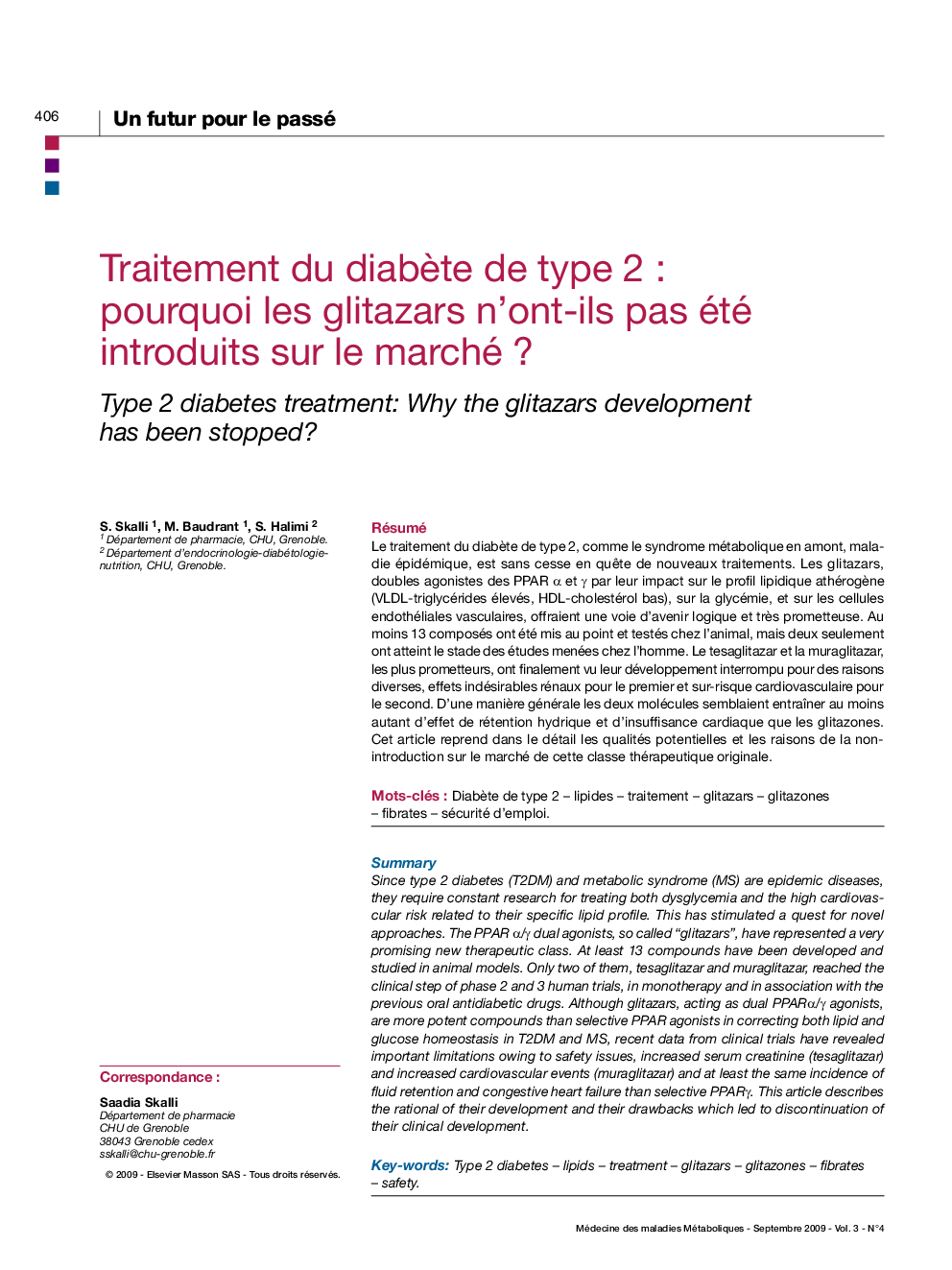| Article ID | Journal | Published Year | Pages | File Type |
|---|---|---|---|---|
| 3275266 | Médecine des Maladies Métaboliques | 2009 | 6 Pages |
Abstract
Since type 2 diabetes (T2DM) and metabolic syndrome (MS) are epidemic diseases, they require constant research for treating both dysglycemia and the high cardiovascular risk related to their specific lipid profile. This has stimulated a quest for novel approaches. The PPAR α/γ dual agonists, so called “glitazars”, have represented a very promising new therapeutic class. At least 13 compounds have been developed and studied in animal models. Only two of them, tesaglitazar and muraglitazar, reached the clinical step of phase 2 and 3 human trials, in monotherapy and in association with the previous oral antidiabetic drugs. Although glitazars, acting as dual PPARα/γ agonists, are more potent compounds than selective PPAR agonists in correcting both lipid and glucose homeostasis in T2DM and MS, recent data from clinical trials have revealed important limitations owing to safety issues, increased serum creatinine (tesaglitazar) and increased cardiovascular events (muraglitazar) and at least the same incidence of fluid retention and congestive heart failure than selective PPARγ. This article describes the rational of their development and their drawbacks which led to discontinuation of their clinical development.
Related Topics
Health Sciences
Medicine and Dentistry
Endocrinology, Diabetes and Metabolism
Authors
S. Skalli, M. Baudrant, S. Halimi,
